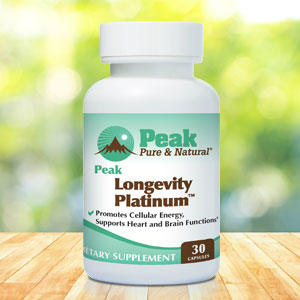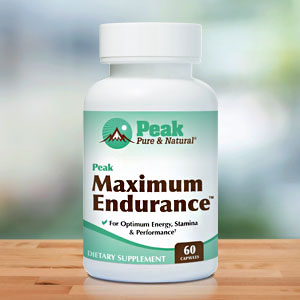Get Easy Health Digest™ in your inbox and don’t miss a thing when you subscribe today. Plus, get the free bonus report, Mother Nature’s Tips, Tricks and Remedies for Cholesterol, Blood Pressure & Blood Sugar as my way of saying welcome to the community!
What catching up on exercise before 60 can do for your 70s

When experts talk about how to live a longer and healthier life, exercise is the one thing that’s always mentioned.
I’m nearly 68 and finally getting started with a consistent exercise routine.
I only wish I’d started sooner — because the newest research says that if you adopt an active lifestyle at mid-age, you can still “turn back the clock” and make all the difference in your senior years…
The difference physical activity makes
First, let’s do a quick review.
Study after study in the last decade or so points directly to non-sedentary behavior as the ticket to a longer life.
Longer, and healthier. I mean, what’s the point of living until 90 if you’re sick and unable to enjoy it?
Not too long ago, I reported about all the diseases you can avoid simply by sitting less, including diabetes, dementia, and heart disease. And my colleagues have reported on the number of diseases that can be avoided just by counting your steps.
Maybe you haven’t taken that advice to heart — but it may not be too late….
The most recent research says you still have time to “catch up” and reap these benefits — especially if you’re a woman.
How to reverse years of inactivity
A study that tracked more than 11,000 women in Australia has found that even if you didn’t exercise in your younger years, you can make up for it so your 70s and beyond are even better.
But there’s a catch…
“Our findings suggest that to maintain good physical health-related quality of life at around age 70, one may be able to “make up” for not being active earlier by becoming active in the mid-50s,” write the research team, led by scientists at the University of Sydney.
“This finding supports public health initiatives for messaging around “turning back the clock” in midlife through lifestyle changes such as physical activity.”
The researchers followed a sample of women aged 47 to 52 who were part of the Australian Longitudinal Study on Women’s Health (ALSWH). They tracked the women from 1998 to 2019, with mental and physical health check-ups every three years.
The women who consistently stuck to at least 150 minutes a week of physical activity over 15 years scored three points higher for physical health on measurements used in the ALSWH.
Now, three points may not seem like a lot. But the researchers are quick to put this into perspective…
“Physical functioning is critical for maintaining independent functional ability, which is a predictor of various health outcomes including disability, hospitalization, and mortality.”
In other words, the less functionally independent an older woman becomes, the more likely she is to die sooner rather than later, or succumb to frailty and become disabled or hospitalized.
One important note: women in the study who waited until their 60s to start exercising consistently did not see the same benefits as those who started in their 50s.
Start with an exercise “snack“
But how to get started, especially if you’ve led an inactive life up until now?
It’s not as hard as you might think.
You don’t have to sweat and groan. Short workouts are the best way to start if you haven’t exercised in a while.
Exercise “snacking” can help maintain the strength of the 600+ muscles in your body, allowing you to do things like squat to pick up a grandchild or lift a bag of groceries onto the counter.
(And by the way, your heart is a muscle, so anything you do that builds muscle strength probably protects your heart, too!).
Find some 12-minute tasks — gardening, for example — that help you break a sweat.
Other ways to “snack” on exercise:
- Turn on the radio and dance around the house (yes, alone!) until you break a sweat
- Play frisbee
- Climb some stairs (a great place to start since leg strength can keep you out of a nursing home!)
- Take a brisk walk around the block
- Learn to play golf – you’d be surprised at the health benefits it can offer!
Even if you’re past 60, don’t feel like you can’t benefit from getting active. In another study, adults 60 and over reduced their risk of premature death by getting in 6,000 to 8,000 steps a day.
Editor’s note: There are perfectly safe and natural ways to decrease your risk of blood clots including the 25-cent vitamin, the nutrient that acts as a natural blood thinner and the powerful herb that helps clear plaque. To discover these and other secrets of long-lived hearts, click here for Hushed Up Natural Heart Cures and Common Misconceptions of Popular Heart Treatments!
Sources:
Exercising in Midlife May ‘Reverse’ Years of Inactivity, Large Study Finds — Science Alert
Physical activity across midlife and health-related quality of life in Australian women: A target trial emulation using a longitudinal cohort — PLOS Medicine
Sedentary behaviour and life expectancy in the USA: a cause-deleted life table analysis — BMJ














